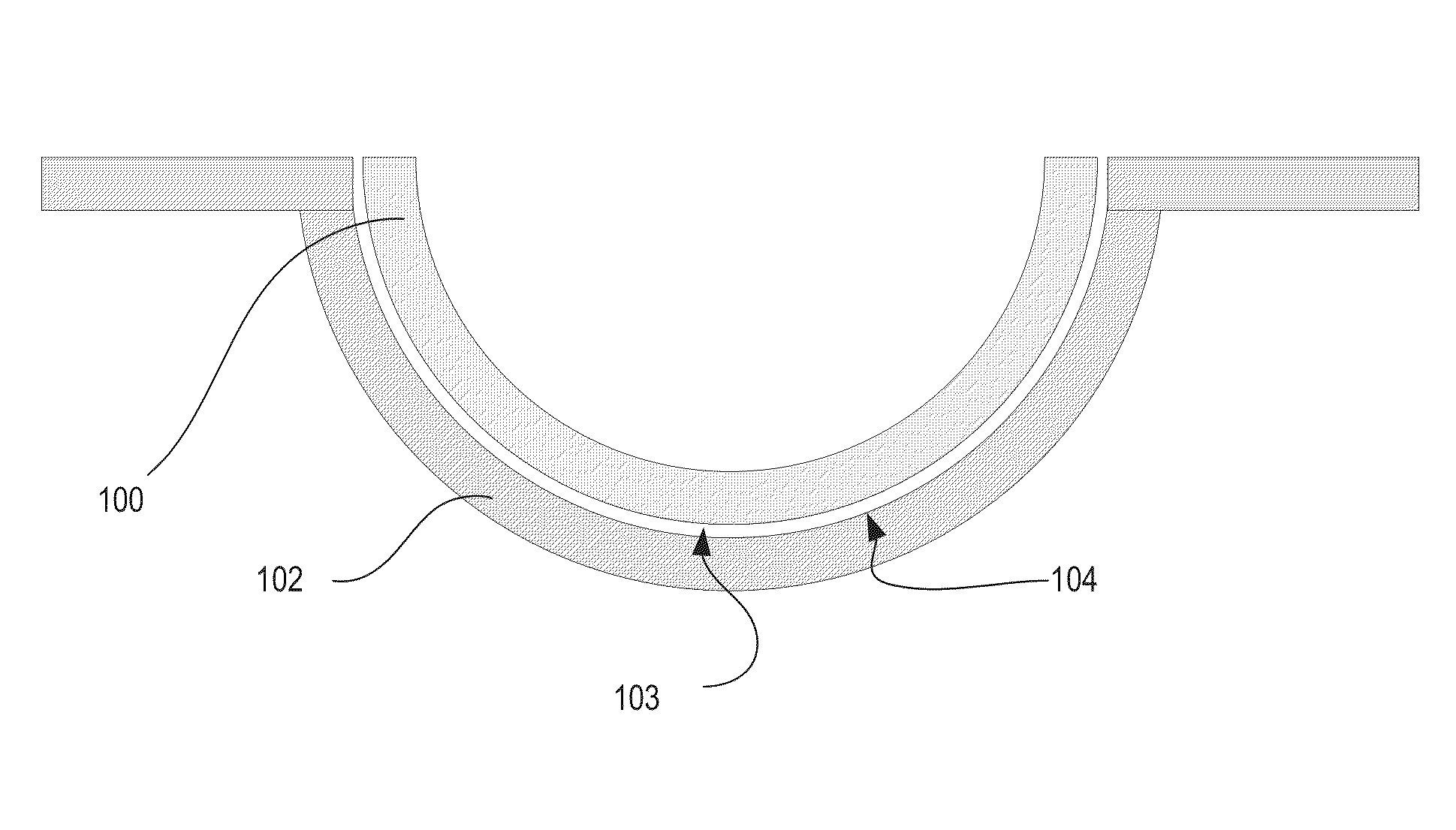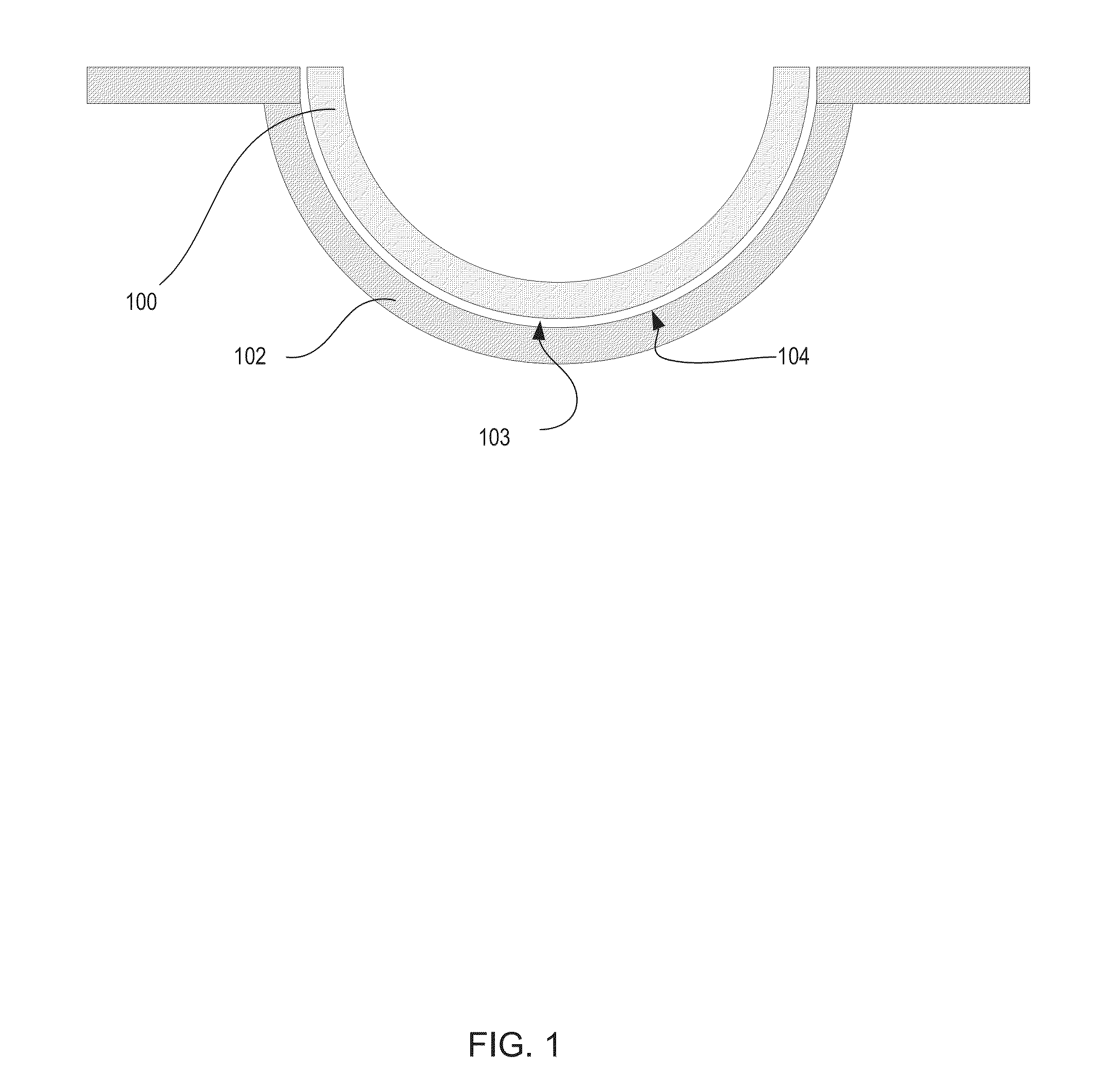Silicone hydrogels comprising desirable water content and oxygen permeability
a technology of silicone hydrogel and water content, which is applied in the field of silicone hydrogel, can solve the problems of poor clarity, high modulus, hampered initial efforts to make silicone hydrogel contact lenses, etc., and achieve the effect of preventing evaporation and dehydration and increasing thickness
- Summary
- Abstract
- Description
- Claims
- Application Information
AI Technical Summary
Benefits of technology
Problems solved by technology
Method used
Image
Examples
examples
[0178]The following abbreviations are used in the examples below:[0179]FC Front mold curves[0180]BC Back mold curves[0181]SiMAA (3-methacryloxy-2-hydroxypropoxy)propyl-bis(trimethylsiloxy)methylsilane (Also known as SiGMA)[0182]DMA N,N-dimethylacrylamide[0183]HEMA 2-hydroxyethyl methacrylate[0184]HEAA hydroxyethylacrylamide[0185]HBMA 2-hydroxybutyl methacrylate, prepared as in Synthetic Example 1[0186]HPMA 2-hydroxypropyl methacrylate (ACROS)[0187]DMHEMA dimethylhydroxyethylmethacrylate, prepared as in Synthetic
example 2
[0188]mPDMS 800-1000 MW (Mn) monomethacryloxypropyl terminated mono-n-butyl terminated polydimethylsiloxane[0189]OH-mPDMS α-(2-hydroxy-1-methacryloxypropyloxypropyl)-ω-butyl-decamethylpentasiloxane, (MW 612 g / mol), prepared as in Example 8 of US20100249356 A1[0190]Norbloc 2-(2′-hydroxy-5-methacrylyloxyethylphenyl)-2H-benzotriazole[0191]D3O 3,7-dimethyl-3-octanol[0192]IPA isopropyl alcohol[0193]TAC triallylcyanurate[0194]TEGDMA tetraethyleneglycol dimethacrylate[0195]TRIS 3-methacryloxypropyltris(trimethylsiloxy)silane[0196]acPDMS bis-3-methacryloxy-2-hydroxypropyloxypropyl polydimethylsiloxane (MW about 1000 g / mole)[0197]CGI 819 bis(2,4,6-trimethylbenzoyl)-phenylphosphineoxide[0198]EtOAc ethyl acetate[0199]DA decanoic acid[0200]Macromer A Described in Example 25 of U.S. Pat. No. 6,943,203[0201]GMMA 2,3-dihydroxypropyl methacrylate[0202]TAA t-amyl alcohol[0203]ETOH ethanol[0204]SA-2 N-(2,3-dihydroxypropane)-N′-(propyl tetra(dimethylsiloxy) dimethylbutylsilane)acrylamide, as shown in ...
examples 1 and 2
[0214]The Comparative Example was repeated, except that the HEMA was increased and NVP was decreased as shown in Table 1, below. The lenses were released from the front curve mold using mechanical force and extracted in di-ionized water at ambient temperature and pressure. Both lenses felt lubricious when rubbed between the thumb and index finger. The percent haze was measured for both lenses and is shown in Table 1, below.
[0215]
TABLE 1Ex. #Ex. 1Ex. 2CE1ComponentWt %Wt %Wt %mPDMS 1000202020TRIS202020NVP4739.2552HEMA10.7518.55.75CGI 819222TEGDMA0.250.250.25% Haze2215259
[0216]The lenses of the Comparative Example 1 were very hazy, displaying a haze value of 259%, while the lenses of Examples 1 and 2 had dramatically improved haze values of 22% and 15% respectively. The lenses of the Comparative Example were so hazy that they could not be used as contact lenses.
PUM
| Property | Measurement | Unit |
|---|---|---|
| wt % | aaaaa | aaaaa |
| water content | aaaaa | aaaaa |
| water content | aaaaa | aaaaa |
Abstract
Description
Claims
Application Information
 Login to View More
Login to View More - R&D
- Intellectual Property
- Life Sciences
- Materials
- Tech Scout
- Unparalleled Data Quality
- Higher Quality Content
- 60% Fewer Hallucinations
Browse by: Latest US Patents, China's latest patents, Technical Efficacy Thesaurus, Application Domain, Technology Topic, Popular Technical Reports.
© 2025 PatSnap. All rights reserved.Legal|Privacy policy|Modern Slavery Act Transparency Statement|Sitemap|About US| Contact US: help@patsnap.com



